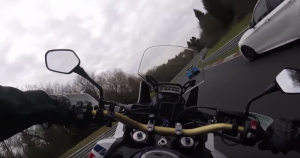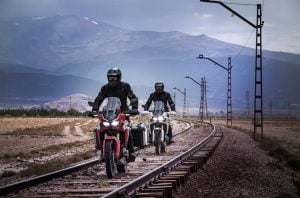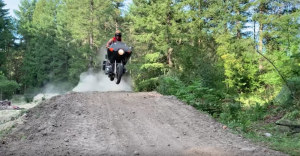Earlier this year I attended the opening of the Honda Adventure Centre in Mythyr Tydfil, South Wales. The centre was opened by Honda in an effort to get riders onto the new Africa Twin to experience first hand just how capable the big bike is off-road, while also getting the chance to learn some techniques from various experts, like Dave Thorpe and Pat Jackson.
Set on a privately owned, disused slate mine, the Honda Adventure Centre provides you with a variety of different terrains and challenges to tackle, from nicely graded gravel trails, to deep mudded ruts, to steep forested tracks, and after spending a full two days riding around the place I still didn’t manage to tick off every piste.
While the Adventure Centre is a great way to test out the Africa Twin, you also get top notch tuition to help improve your riding, and I’m in no doubt that having thrown a big 230kg bike around helped make me a better rider, both on green lanes and on the roads.
It was a full-on two days, and my riding certainly came on leaps and bounds from the intensity of it, but here are six things I learnt about riding a big bike off-road.
The Africa Twin doesn’t feel like a heavy bike
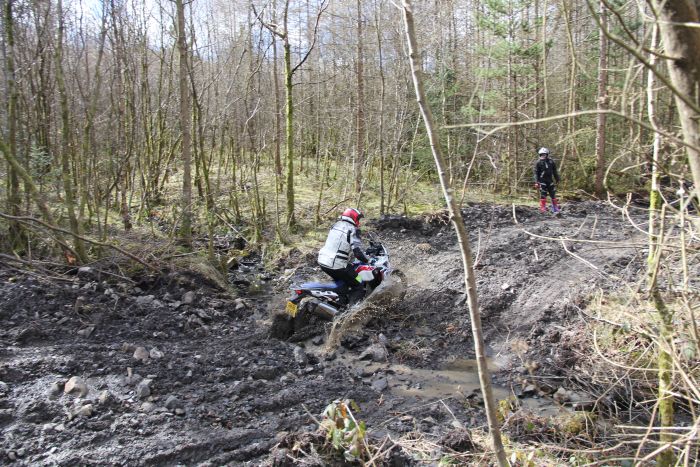
When the Africa Twin was first announced, there was a lot of hoo-ha about the machine’s weight. Many riders were crying out for a lighter weight adventure bike and while the Africa Twin promised more of a focus on off-road riding, the 232kg kerb weight put many people off immediately. To those who have decided not to buy the Africa Twin based on the bike’s weight, I ask you this: have you ridden it yet?
If you have you’ll have noticed that Honda has done such an incredible job all round with the design of the Africa Twin that it really doesn’t feel like a big, 1000cc adventure bike at all. My usual off-roader is a Suzuki DRZ400 and yeah, there’s no denying that it’s easier to throw around the lanes than the Africa Twin, but the gulf isn’t as wide as some might think.
Of course, if you drop it, it certainly feels like a big bike when you’re busting your ass to pick it up.
Off-roading on a big bike is hard work
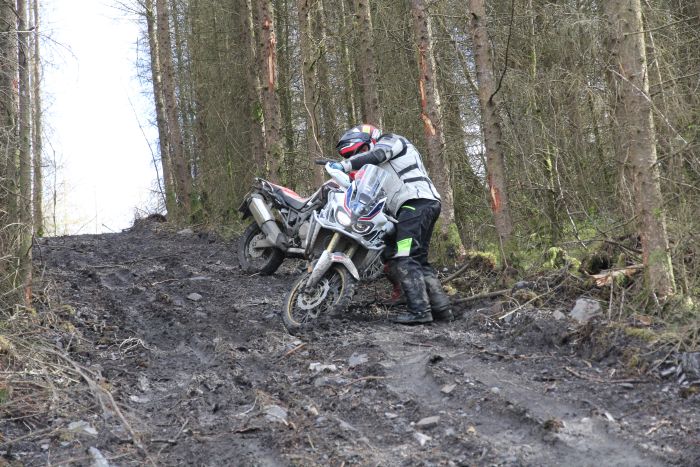
Despite the first point, there’s no denying that physically speaking, working a big, heavy bike across rough terrain is hard work. Particularly so if you drop it throughout the course of the day. There was one instance where a rider had burnt his clutch out halfway up a boggy, muddy trail. It took five of us to man handle the beast to the end of the track where it could then be towed back to base to be fixed. Had this happened out in the real world and there was just two of us, we’d be screwed.
Unless you’ve got the talent of Chris Birch or Kevin Carmichael, riding a big bike off-road and having to deal with the pushing and pulling that goes with it is exhausting work.
Traction control can make or break you
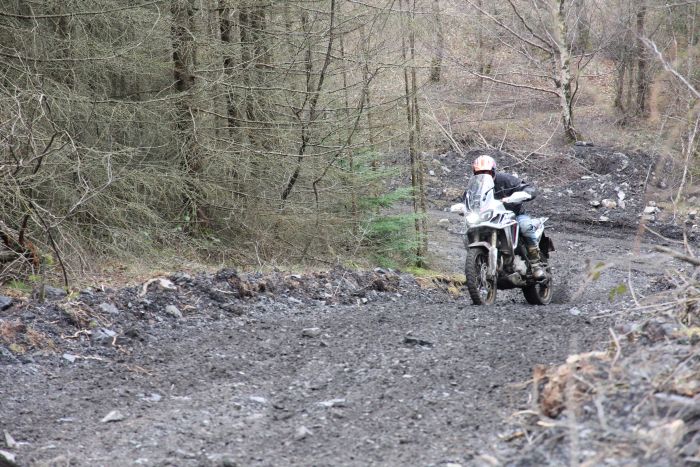
Up until my time at the Honda Adventure Centre I’d never really been too bothered with playing around with a bike’s controls. I’d probably press the wrong button and end up messing everything up, but the Africa Twin has a very pronounced button for adjusting the levels of traction control (TC), allowing you to toggle between settings on a scale of 1-3 bars.
With TC on level three, things feel a bit restrictive. As soon as you take the machine off the tarmac, at the slightest hint of wheel spin it’ll kick in and drop the power massively. I’d imagine it’s great for complete beginners, but if you’re anything more than a virgin on the trails you’ll find it too intrusive.
I found level two to be perfect. It allows for some spin, but not enough that you lose the back end if you find your right hand crank angle doesn’t correlate with your skill level. You can still kick up a nice rooster tail, and there’s enough lee-way to get a bit of a slide around corners. Confidence inspiring is a good way to describe level two.
Level one is as good as off. Most of the guys in my group were riding this setting, though I tried it and couldn’t quite get to grips with it.
Falling off doesn’t hurt as much as you’d think (in most occasions)
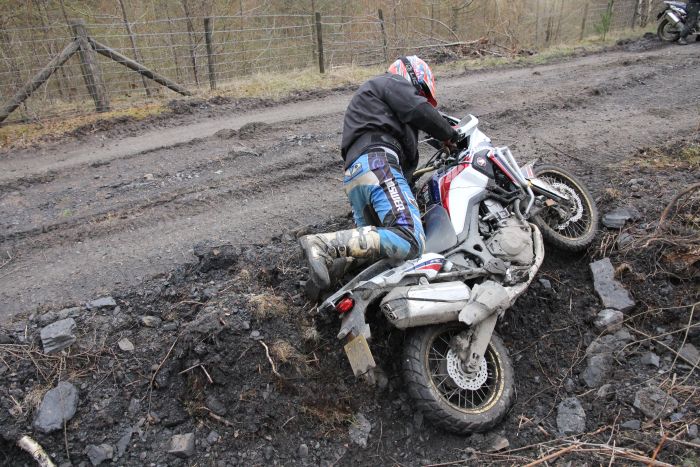
Now, don’t get me wrong. I’m not saying that coming off a bike doesn’t hurt at all, but when you’re riding the sorts of speeds you’ll be riding at the Adventure Centre, if you come off the likelihood is that you’ll only get a bit bruised, and that’s part of the fun!
In total, I hit the deck about seven times over the course of the two days. I had a few big bruises and a damaged ego, but coming off that many times and not seriously hurting myself actually inspired me to be more confident in the saddle, and with more confidence comes a more relaxed, efficient style of riding.
Of course, motorcycling is an inherently dangerous hobby, and I’m by no means saying that you’ll never hurt yourself if you come off a bike. Be sensible.
You can be fit, but not bike fit
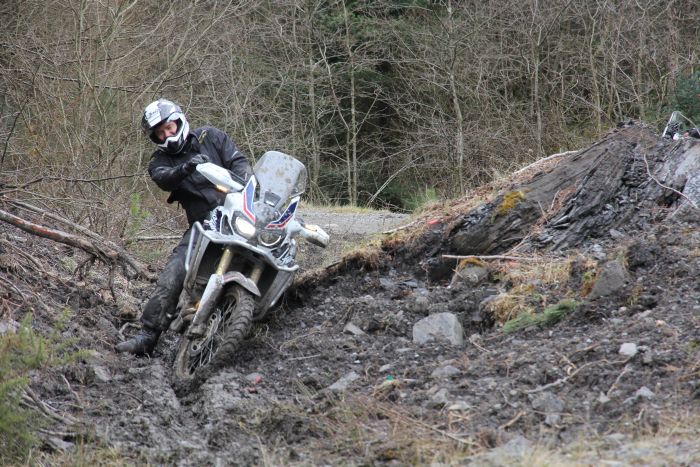
I consider myself to be fairly fit, physically. I go to the gym between 3-5 days a week and for the past three years I’ve been walking my dogs twice a day for an hour at a time. I dabble in the art of green laning every now and then, but usually our rides are at a more leisurely pace, enjoying the location rather than pushing man and machine to the limit.
So, I was in for a bit of a shock when I started the two-day course. It’s intense riding over a lot of rough terrain, and you’re probably going to drop the bike at multiple points throughout the day. After the first hour I was sweating more than I ever sweat at the gym, and by the evening I was ready to collapse into bed rather than go for a beer.
It was a type of fatigue that I haven’t felt since the days when I played rugby. Of course, the only way you can get better is by doing more of it, so get working in that saddle and build up your fitness.
DCT doesn’t take the fun out of riding…
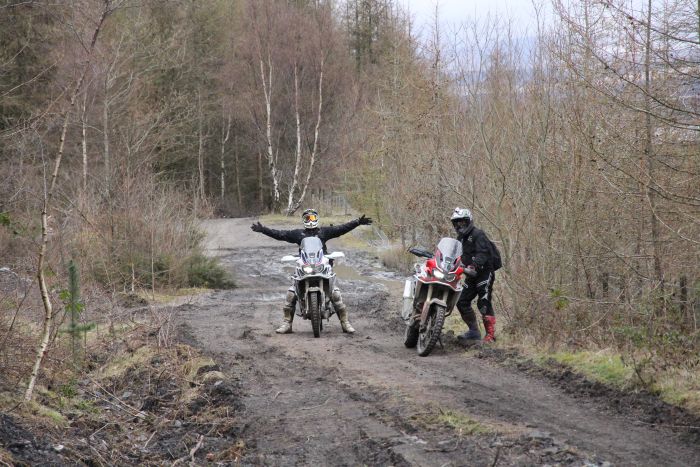
In fact it adds to it. Having long been an advocate of manual gear changing, on both cars and bikes, I’d made up my mind about DCT and automatic gear shifting before I’d even tried it. A year ago I swapped my car in for an automatic Jeep and fell in love with the stress free driving experience, and at the Honda Adventure Centre I got the chance to try out the DCT model and, in a similar fashion, I wanted to take the DCT version home.
Fortunately, our long term Africa Twin is the DCT version, and by no means has the removal of the need to change gears detracted from the riding experience. There’ll be some who don’t get on with it, but the twist and go nature, the smoothness of the ride, it all adds to a fantastic experience.
It can be a bit tricky to get used to at first, and the slow control aspect is hard to wrap your head around, but once you do you’ll be flying along with a huge grin on your face.
For more information about the Honda Adventure Centre, check out their website.



